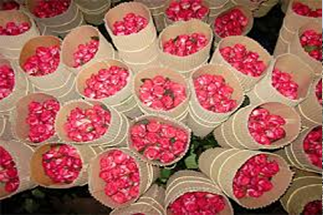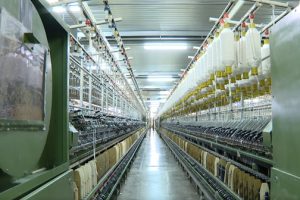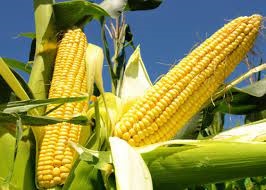
Horticulture exports from Ethiopia are growing very rapidly and are considered to be an important element in the country’s efforts to diversify exports, thereby directly contributing to poverty reduction and economic growth. Joint efforts on a wide range of issues are being implemented by the Ethiopian government, the private sector, and developmental partners. They are working hard to secure further well-balanced growth of the sector and increase societal benefits in terms of employment and foreign exchange earnings, as well as minimize the possible negative impact on the natural resource base.
Taking this fact into account, The Ethiopian Herald had a stay with the Ethiopian Horticulture Producer Exporters Association (EHPEA), Executive Director Tewodros Zewdie, and other companies’ officials working in the area.
He said, “The Ethiopian Horticulture Development Agency (EHDA) aims at making Ethiopia a leading African country in export-led horticulture or the cultivation of Ethiopian flowers, vegetables, fruits, and herbs to be sold overseas. Export horticulture is booming and the country is now the very good supplier and exporter of highest quality flowers.”
The revised strategy would play a significant role in addressing agro logistical challenges, improving good agricultural practice and creating more skilled manpower, he said.
“Apart from expanding the opportunity to become competitive at international level, it would provide agro-processing input, enhance economic contribution and improve financial and input provision. With regard to cold chain logistic, the association has undertaken serious talks with different stakeholders to address the problem in no time. The horticulture sector is generating more than five hundred million USD annually, which could be doubled with more land provision. Tewodros noted that discussion is being held with concerned bodies to return the companies in conflict areas to business.”
As to him, the revised national horticulture strategy is expected to solve the major challenges in the horticulture. The 2024/25-2034/35 strategy, which is prepared with the contribution of all essential actors, will be carried out with the budget of 24 billion USD gained from government, partners and private sector.
He further stated that the revised strategy would play a significant role in addressing agro logistical challenges, improving good agricultural practice and creating more skilled manpower as well as transferring knowledge.
Ethiopia offers plenty of opportunities to cultivate a range of horticultural crops due to its diversified soil and climate, which includes numerous agro-ecological areas. Ethiopia has considerable altitudinal fluctuations, making it suited for the cultivation of economically significant vegetable crops, he said.
He said, “The Ethiopian government has committed itself to contribute to strengthening the enabling environment of the horticulture sector through the support to the Ethiopian Horticulture Producers Exporters Association, increasing the food security and safety of Horticulture producing smallholder farmers and consumers and promote sustainable and inclusive production. To improve the productivity in the sphere, the government and stakeholders have revised the previous national horticulture strategy that was not successful for lacking timeliness, failed to engage private sector and ensure technological advancement.”
Currently, the flower, fruit, vegetable, and herb farms occupy a hard currency generation; the horticulture sector has been gaining momentum.
Favorable climate, availability of land and the incentive packages provided by the government have all contributed to the phenomenal and successful growth of the floriculture sector. Ethiopia has now a number of active flower farms and is becoming the second East African largest flower producer and exporter next to Kenya.
Apart from the abundant natural resource endowments with vast agro-ecological areas suitable for range of floricultural crops, Ethiopia’s horticulture sector not yet yielding the required result due to poor infrastructure, shortage of skilled manpower, finance, and security challenges, he said.
As far as fruit production in Ethiopia is concerned, although Ethiopia has a long tradition of producing fruits; like banana, pineapple, mango for home consumption and neighboring countries export, it is only recently that the investment has been made in large scale production and the production of less traditional fruits including strawberries, table grapes, and passion fruits.
Investors engaged in the horticulture sector have also expressed their major concerns in the sector. FRI-EL Ethiopia Farming and Processing Plc for instance grows cotton, vegetables, fruits, spices as well as oil seeds on 3000 hectares of land and exports to Somaliland, Djibouti and Saudi Arabia countries.
Abebayew Gebreselassie, from Abyssinia Horti Company, which started operation since 2019, exports flower for countries in Europe, US, Japan and far east. Nonetheless, it has stopped operating due to instability in the Amhara State.
As to her, the company has been operating without power for two years and much hasn’t been changed despite the request to concerned institutions. One of its sister company located in Oromia State has operated more than 14 years exporting to various countries across the globe despite insecurity in the area.
“Similarly, efforts would be exerted to develop fruits and vegetable crops hugely. With the increasing of the world population, the demand for fruits and vegetables would likely to increase. Thus, as a country with rich potential for fruits and vegetables production, Ethiopia has huge potential,” he said.
The revised national horticultural strategy, which will be operational soon, is said to pinpoint strategic areas that is hindering the nation from gaining the right amount of benefit. It would also identify potential corridor for fruit and vegetable production, build horticulture parks, and expander-commercialization and cluster, among others.
The availability of fertile land, labor, and readily available water together with cold chain facilities at three airports and a rapidly improving road and rail transport network all make Ethiopia the right place to invest in vegetables.
Ethiopia’s climate is very well and suitable for the production of herbs, and many investors are keen to exploit the potential. Currently, there are four herb producing farms in Ethiopia.
According to Tewodros, investors eyeing on revised national horticulture strategy as it would be instrumental in bolstering the sector in all aspects. Apart from the abundant natural resource endowments with vast agro-ecological areas suitable for range of floricultural crops, Ethiopia’s horticulture sector not yet yielding the required result due to poor infrastructure, shortage of skilled manpower, finance, and security challenges.
He said, “To improve the productivity in the sphere, the government and stakeholders have revised the previous national horticulture strategy that was not successful for lacking timeliness, failed to engage private sector and ensure technological advancement.”
It is obvious that EHPEA is a non-profit organization established in 2002 to promote the growth and development of the Ethiopian horticulture industry. EHPEA is committed to improving the quality of horticultural products and ensuring they meet international standards while protecting the environment, promoting social responsibility, and enhancing the well-being of workers.
EHPEA currently has over 120 members, including horticulture producers, exporters, and other stakeholders in the industry. Its members account for over 85% of Ethiopia’s horticulture exports, making the association a significant player in the industry. EHPEA is committed to sustainable horticulture and operates under the principle of “growing better together.”
To achieve this, the association provides technical assistance and capacity building to its members to promote sustainable production, quality control, and product diversification. The association requires its members to comply with labor laws and promote safe and healthy working conditions. Members must also respect the rights of workers and communities surrounding horticulture production areas.
By adhering to the Code of standards and guidelines, EHPEA members can produce high-quality horticultural products while promoting sustainable production and social responsibility. Association’s commitment to these principles has helped to position Ethiopia as a leading exporter of horticultural products globally.
The effective implementation of the strategy would allow the nation to ensure food security, enhance export capacity, substitute import and create more jobs, he added.
The association is working hard in collaboration with development partners thereby contributing a lot to the economic advancement via properly addressing a range of challenges from which the sector has been suffering.
Besides, expanding the opportunity to become competitive at international level, it would provide agro-processing input, enhance economic contribution and improve financial and input provision.
With regard to cold chain logistic, the association has undertaken serious talks with different stakeholders to address the problem in no time. Similarly, in relation to importing electrical cold truck, it is performing activities to come up with better solution.
Feed the Future Innovation Lab for Horticulture focuses on horticultural crops, primarily fruits and vegetables. Common definitions for horticultural crops also include herbs, spices and ornamental flowers. As far as the significance of horticulture is concerned, the sector enriches especially with specifically, growing fruits and vegetables — provides critical nutrients for a balanced diet. Diets low in fruits and vegetables contribute significantly to some of the world’s most widespread and debilitating nutrient-related disorders.
He said, “It is well underscored that horticulture has been increasing incomes and economic growth. For instance, farmers growing high-value crops, such as fruits, vegetables, flowers or herbs, consistently earn more than those growing other commodities. Horticulture can be an engine for agricultural and economic diversification.”
In a nutshell, diversifying the sources of economic development such as horticulture, which can be guided by an in-depth and collaborative global trend, would help identify challenges of the horticulture development. Given the complexity of horticulture, innovative leapfrog technologies can reduce constraints and promote the ability of smallholder farmers to achieve maximum profitability.
Besides, commercial success in horticulture depends on locally adapted research on tools such as improved cultivars, management tools, market knowledge and effective postharvest practices. Sustained horticultural growth requires access to reliable information, a well trained workforce and local capacity to conduct both original and adaptive research
BY MENGESHA AMARE
THE ETHIOPIAN HERALD WEDNESDAY 14 AUGUST 2024




